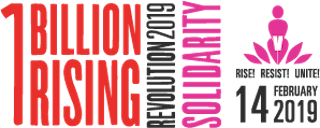4 YEAR REPORT MAPS DISMANTLING OF NATION’S FRATERNITY, ECONOMY, CULTURAL ETHOS
‘Lynching’ defines fear, hate, and targeted violence
The National Democratic Alliance completed four years of its five-year term in May 2018, but it is almost five years now since the Bharatiya Janata party chose Mr Narendra Modi, then the chief minister of Gujarat for 12 years, as the man who would lead it into the general elections. The elections, with Mr Amit Shah as the party president and Mr Modi’s lieutenant, saw possibly the most acrid and divisive electoral campaigns in the history of democratic India. The Modi-Shah leadership polarised the people, but Mr Modi also appealed to the emerging ‘millennial’ generation with a promise of development, employment, and a decent life, codified in the word “Achhe din”, Good Days.
In the four years that the BJP-led NDA-II has been in power with Mr Modi as Prime Minister, the Achhe Din, good days, have failed. Achhe Din have turned into an unending nightmare. What has exacerbated is the hate, the fear on the ground, and the targeted violence. ‘Lynching’ is the new word heard in a country where fraternity and secularism were the bywords of governance and life. ‘Demonetisation’, ‘Gau Rakshak’, and “Anti-National” are the omnibus terms which spell the devastation of the economy, the new non-constitutional cadres enforcing a private law, and how the ruling dispensation looks at political opponents, academics, students, artists, scientists, trade unionists and civil society. Promises to end corruption to set up a Lok Pal have been forgotten in encouraging crony capitalism and diluting environmental laws. This government is selectively creating and modifying data to project its own narrative.
These are the findings, and the analysis of experts, scholars, academics, activists in a volume titled ‘DISMANTLING INDIA – A 4 YEAR REPORT’ edited by John Dayal, Leena Dabiru and Shabnam Hashmi, published by Media House. The Book was released at a function at Constitution Club on 14th July 2018.
The writers include Admiral L Ramdas, Prof Arun Kumar, Aruna Roy, Ashok Vajpeyi, Colin Gonslaves, Gauhar Raza, Goldy M George, Harsh Mander, Hartosh Bal, John Dayal, Juno Verghese, K Satchidanand, Karen Gabriel, Kavita Krishnan, Mani Shankar Aiyar, Mathew Jacob, Nikhil Dey, Paul Divakar, Rakhi Sehgal, Rakshita Swamy, Ram Puniyani, Souradeep Ray, Subhash Gatade, Surjit Singh, Syed Hamid, Usha Ramanathan, Vidya Bhushan Rawat, Vijoo Krishnan.
“Anti-national” is the most heard word in India today, the Report says. Union ministers and party leaders use it to describe members of the parliamentary opposition, as well as men and women in trade unions, students and teachers in universities, dissidents and independent thinkers in Academies of Art and Literature, and the few who dare write speak in the Media.
Activists, who in 2017 and 2018 travelled through the country meeting victims of targeted hate and the families of those lynched by Gau Rakshaks and others look at the brutal aftermath of this frightening phenomenon which was unknown in the past, but has now burst on the scene in some virulent, omnipresent form. Its impact is felt most by the Muslims, and the Dalits. The alienating hate campaigns in which government, party and Sangh have been complicit, triggered it. The internet, the smartphone and the apps, signs of modernity, became instruments of the targeted hate and the ensuing bloodshed.
The Report cautions that the shrinking democratic and civil spaces and the new trend of silence and acceptance, directly and indirectly injected by the State, pose a danger which has implication not for India alone. They re-define ‘nation’ to homogenise it, directly threatening India’s secular and cultural fabric.
The conquest of the Constitution by an ideology has manifested itself in the speed with which it has penetrated the delicate educational, cultural and intellectual ecology. It is important to see the process of saffronization of education, not just as a matter of changes in textbooks and syllabi, although these are certainly the most immediately evident signs of it. It is about producing students who are receptive to being saffronised even outside the walls of the school, or college, or university, where in fact, their actions and beliefs have a much bigger role to play. It is not just about promoting the Hindutva imagination, but about making it familiar, unremarkable, and being willing to accommodate it as the norm, even when not subscribing to it directly.
This is also exemplified in the daily spectacle in the field of culture. Major institutions, national and public, have been forced to organise events on some pet projects of the Government. Similar events in favour of the government are organised by the media, under duress or a self-accepted obligation, a sort of price to pay for survival, a religious tax.
This Report rests best in its analysis of data in the public domain, a reality check of the claims of the prime minister whose electoral victory also partly engined by his appeal to the emerging aspirational class, and the educated youth of employment, prosperity and a better life. In 2016-17, actual jobs created were 4.1 lakh as against the BJP’s electoral promise of creating one crore jobs annually. The CMIE-BSE surveys said by April 2018, the unemployment rate had risen above 6%. The situation is worse for the female workforce. The rate of unemployment among women has reached nearly 8.7%.
The Report exposes data management or data manipulation used by the government to mislead the people. Statistical measurement tools to gauge economic development have undergone dramatic changes over the past 4 years. New GDP series based on 2011-12 pushed the GDP growth rates to much higher levels than the 2004-05 series, the continuous flip flop over the back series has resulted in a complete lack of evidence on the comparative GDP growth rates for pre-2011-12 years, making it impossible to compare the new growth data with the growth before 2014.
After opposing the logic and implementation of the Aadhar project when it was an opposition party, the BJP has turned 180 degrees making Aadhar one of its biggest projects. As Gopal Gandhi said – conceptually Aadhar is the opposite of the RTI. While the RTI gives every citizen the right to watch every act of the state, Aadhar will give the state the right to watch every transaction of every citizen. At the same time, the centralised biometric authentication system has resulted in the exclusion of lakhs of poor people. In Rajasthan for instance, more than 20% of eligible beneficiaries with Aadhar cards have been unable to draw their rations for more than a year. That is more than a crore of the poorest people of the state.
The final appellate authority for RTI appeals, had for the first time during BJP rule seen a situation where the government refused to find replacements for vacancies.
The Report points out that physical attacks on rationalists and science communicators are symptoms of a much deeper social disease. In the last four years, the attacks on rationality, scientific vision, scientific temper and those who are trying to fulfill their constitutional obligation of ‘spreading scientific temper and spirit of enquiry’ have increased exponentially.
The Report states that every woman journalist or activist or academic or actress or sportswoman on Indian Twitter who is critical of the Modi Government is witness to the vicious organised army of Sanghi trolls who circulate fake news, fake tweets, morphed pornographic photos and videos, and sexualised abuse to intimidate them.
The Report points out that Modi is unable to see foreign policy beyond the photo-op.
The Report has a comprehensive set of data tables of more than 200 pages covering the impact of the regime on most segments of life. This includes communal and targeted violence against religious minorities and Dalits. This data documents hate speeches and hate crimes, especially lynching fuelled by communally charged hate campaigns over social media, attack on women rights, attacks on civil society and freedom of expression. It looks at undemocratic trends and also documents the upsurge of arms training camps by the right wing groups across many states in India.
The Report, in an A-4 format in hard cover and soft cover bindings, has 356 pages and is available on Amazon.



